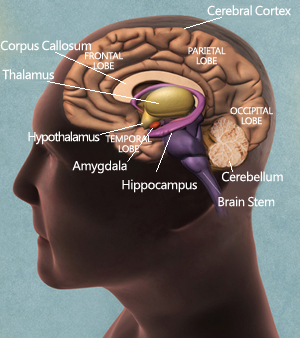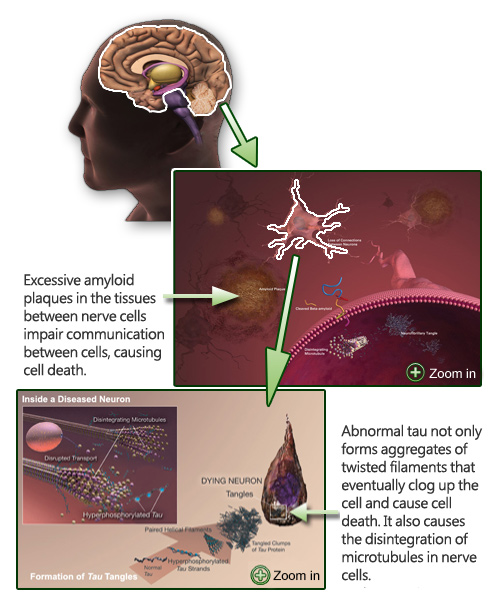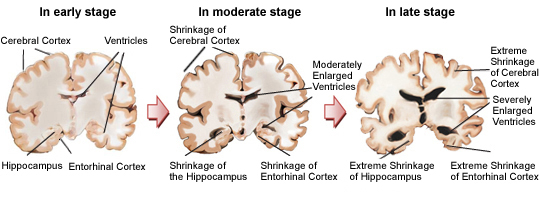Structure of the brain

The cause of Alzheimer's disease is still unknown, but we have found that people with Alzheimer's disease have amyloid plaques in the tissue between their nerve cells and neurofibrillary tangles within their neurons. These lead to the death of brain cells and results in the decrease of intellectual functioning.
Amyloid plaques are clumps of protein called amyloid, forming what is called amyloid deposition. An excessive amount of amyloid plaques will impair communication between nerve cells, causing neurons and other cells to die. Neurofibrillary tangles are aggregates of twisted helical filaments of a protein called tau, which in this case has become abnormal. Tau is a microtubule-associated protein that helps microtubules to support the structure of nerve cells and deliver substances in cells. Microtubules cannot function when tau filaments form tangles and disintegrate. The disintegrated microtubules feed the formation of tangles, which eventually clog up a cell and cause the cell to die. Both abnormalities intensify as people age and lead to the shrinkage of the cerebral cortex of the brain.
People with Alzheimer's disease will show a progressive decline in cognitive functions, such as impairment in memory, cognitive ability, thinking and understanding, decision-making and judgment, as well as normal activities of daily living. They may show personality changes as well.
There is no cure for Alzheimer's disease at the moment; medication cannot stop or even delay progression of the disease. Medications can only slow the worsening of symptoms so that the person can have slower memory loss and remain independent for a longer period.
Structure of the brain

The development of Alzheimer's disease

The brain of a person with Alzheimer's disease

The brain shrinks as the disease progresses.
Images courtesy of the National Institutes of Health, National Institute on Aging